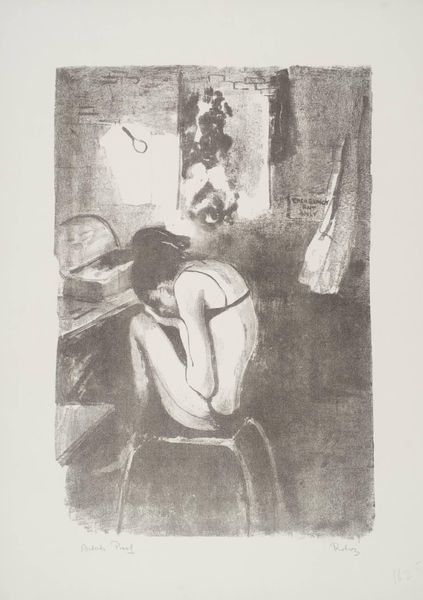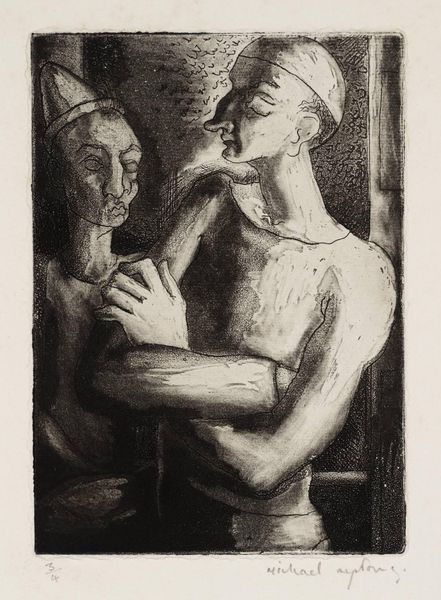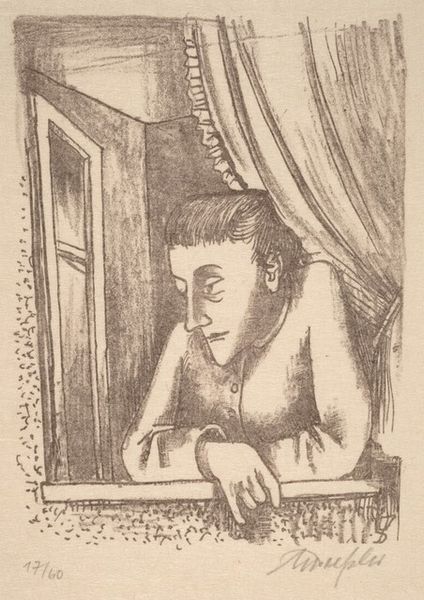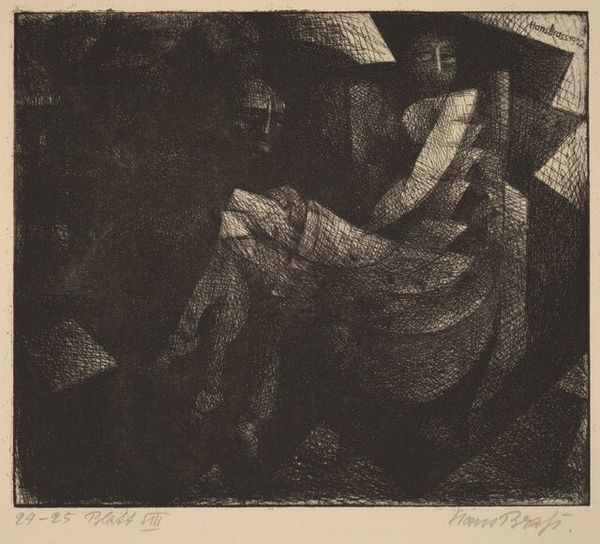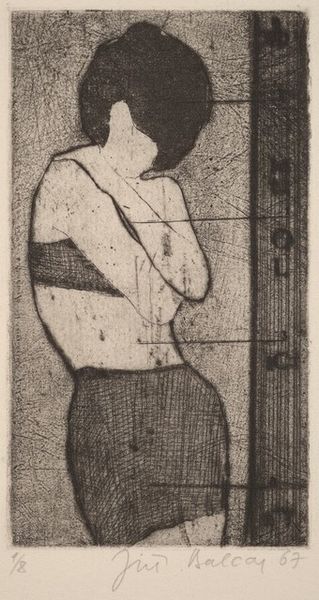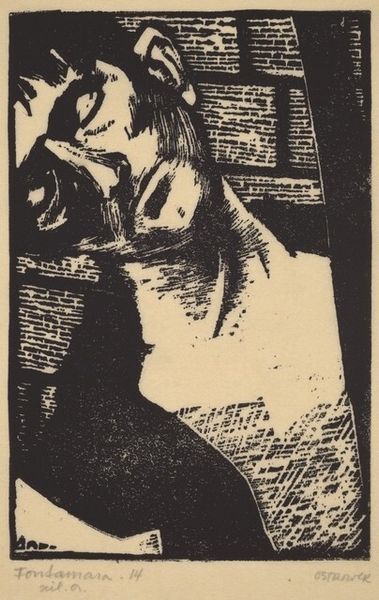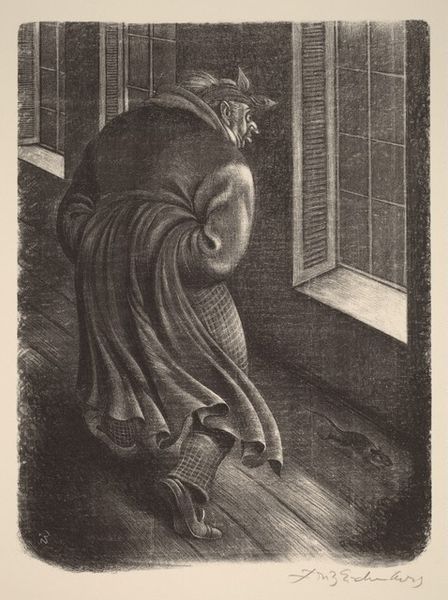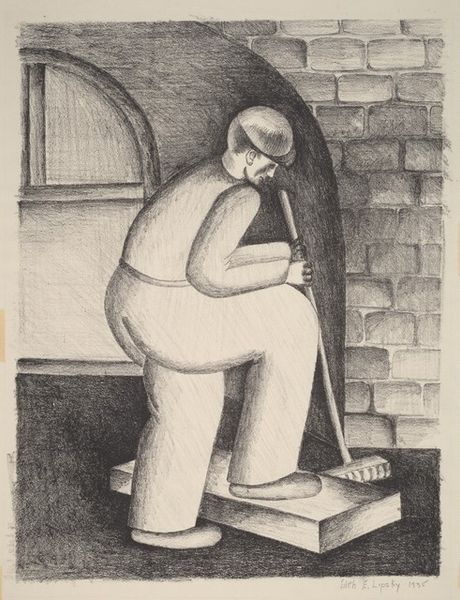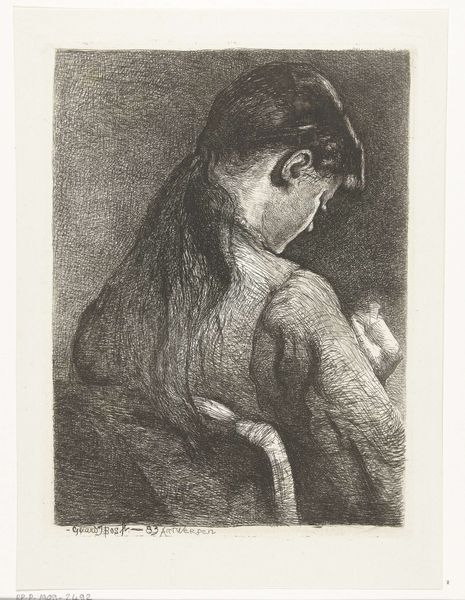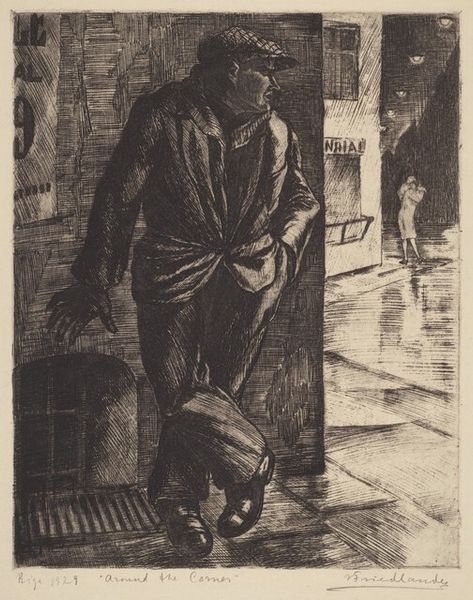
print, etching
#
portrait
# print
#
etching
#
figuration
#
pencil drawing
#
portrait drawing
#
realism
Copyright: National Gallery of Art: CC0 1.0
Curator: I’m struck by the intimacy of this image. The figure, shoulders hunched, eyes downcast, reads from a small book or document. There’s an almost painful tension to the pose. Editor: You've zeroed in on the emotional affect, but let's back up a bit. This print, an etching entitled "Climate of Fear," was created by Benton Spruance in 1952. Look closely at the crosshatching and tonal gradations. It is a phenomenal piece in how its maker used printed mark making to evoke the subject. Curator: Yes, technically superb. The strategic placement of light and shadow pulls our focus squarely onto the figure's face and hands. I'm particularly drawn to the ambiguous window or screen to the left. It fractures the light, suggesting unease, a distorted perception. Is she safe within, or trapped? Editor: Well, and think about printmaking at that moment. An etching is inherently reproducible, lending itself well to mass communication. This wasn't a singular painting destined for a wealthy collector's home, it's built for circulation. Considering the McCarthy era paranoia that gripped America at the time, Spruance likely conceived of this work to question the sociopolitical structures that influenced cultural anxiety. Curator: Ah, so that shadow over her face speaks volumes! And the downward tilt of her head—a refusal, perhaps, to meet the gaze of an unseen oppressor? Her whole demeanor seems to speak to resistance. I see now the title is more than evocative, but programmatic to viewing the subject. Editor: Precisely. Each etched line speaks to the laborious and mechanical aspects of its production. That meticulousness mirrors the systematic scrutiny to which people's beliefs and associations were then subjected. What the labor of making makes visible in this era of the ‘big lie,’ is a cry for recognition—how materials and form meet subject to represent a particular cultural memory, for better or for worse. Curator: Your understanding shifts the focus entirely. Before, the work felt intensely private and aesthetic; now it's charged with a clear sense of cultural critique. I hadn't grasped how the labor of the work speaks. Editor: Likewise, seeing your interpretation lets me appreciate Spruance’s brilliance in eliciting the intimacy that is so resonant.
Comments
No comments
Be the first to comment and join the conversation on the ultimate creative platform.
